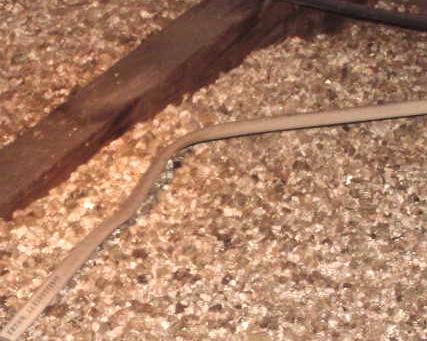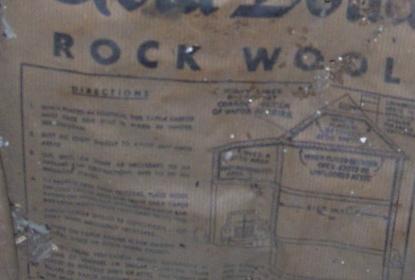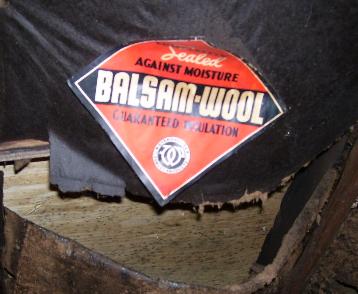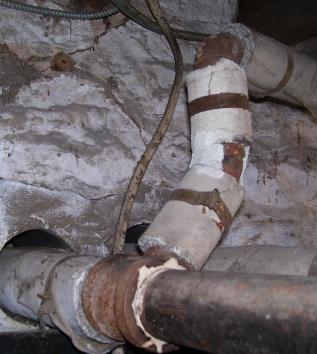

In the attic
Vermiculite is a “loose fill” insulation that looks like a mixture of small grade gravel nuggets, but is soft when squeezed, just like popcorn. The pieces can be a mix of gray, light-brown, dark-brown, silver or gold.
About 80% of all vermiculite produced before 1990 was from a mine near Libby, Montana. Unfortunately, there was a natural deposit of another mineral, asbestos, in this mine. The Zonolite Company produced the vermiculite until it was purchased by WR Grace & Co in 1963. I occasionally find full bags left in attics labeled “Zonolite Brand Insulating Fill”.

According to the EPA and CDC, at this time there are significant limitations in the testing methods and test results may not accurately determine if any vermiculite sample contains asbestos. The professional care and consistency of where and how many samples were collected can also effect the accuracy of test results.
Since a majority of all vermiculite came from the contaminated Montana mines, it's best to treat it the same as known asbestos containing materials. Just like other asbestos containing materials, the best practice is to not do anything to disturb the material that could send asbestos fibers into the air.
"Wool" Insulation
Rock wool is made from mineral fibers manufactured from stone and waste from mining . It consists of aluminum silicate rock (basalt), furnace slag and limestone or dolomite. Slag wool is produced mainly from blast furnace slag with some natural stone.
The term for both types of this fibrous insulation is mineral wool. Mineral wool was the most common thermal insulation for residential use until the 1960s, when fiberglass insulation become the standard. The raw materials are melted in furnaces and blown with air or steam over spinning drums or a centrifuge to create the fibers (picture making cotton candy).
Asbestos is a naturally occurring fiber that is mined. Since mineral wool is a man-made fiber, it does not contain asbestos. I’ve read about mineral wool, asbestos and resins mixed together to manufacture a couple specific industrial insulating products, but it’s not likely the kind of stuff used for residential insulation.


Balsam wool and Silva wool are shredded wood products, some treated with borax as a fire-retardant. They're considered natural products and also are not known to contain asbestos. These look a little like mulch. It can be loose or in batts.
Kimsul looks like layered creped paper and is impregnated with asphalt. It is not known to contain asbestos. It was manufactured from the early-mid 1930s through the early 1950s. It was first used in refrigerators, then car dashboards and train cars. It was also used by the US military during WWII and lined many Quonset huts assembled in cold climates.
Fiberglass and cellulose is not known to contain asbestos.
Other than contaminated vermiculite, it's not very common to find asbestos insulation in residential attics
Heating Duct and Pipe Insulation
Most asbestos duct insulation is a paper-like wrap around heating ducts. Later duct systems may have it wrapped only around the joints of the ducts.
Asbestos pipe insulation is most commonly found on steam or gravity hot water heating pipes. It is occasionally used on water supply pipes and on some drain pipes in unconditioned spaces.


The above describes the most common insulation materials in old homes and which are likely to contain asbestos. There are many other old building materials that may contain asbestos. For more detailed information about what do if there is asbestos, please visit: www.epa.gov/asbestos/protect-your-family-exposures-asbestos#doanddont

Bill Kibbel is a consultant and an inspector of historic homes
& commercial buildings at Heritage Building Inspections.
Sin
The web page was started with Mobirise web templates